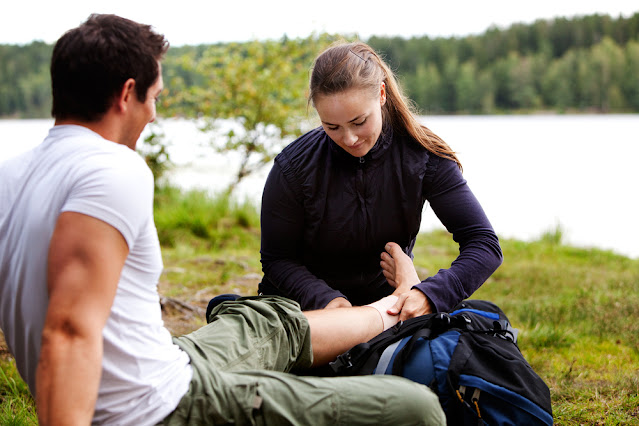Wilderness First Aid Basics You Should Know
Before you head outside, would you say you are certain you have a wild emergency treatment pack with you? Also, a total one at that? You'll never realize what circumstance you'll run into, so it's ideal to be readied!
Wilderness First Aid Kit Essentials
As you plan your next climbing or outdoors trip, remember to pack your First Aid Kit – regardless of whether it's as basic as a couple of wraps and some sterile treatment. In a perfect world, your unit will be somewhat more hearty and could wind up being a basic segment of your journey. Having the option to treat minor injuries and comprehending what to do if there should be an occurrence of significant wounds can be a lifeline out in nature.
Contingent upon where you adventure out, the threats you face could differ from a wound lower leg to a scratched knee, to frostbite and hypothermia, to honey bee stings to broken bones. Instead of estimate at how to deal with things, know before you go – along these lines you don't get yourself miles from the closest clinic in desperate waterways.
First Aid Kit Checklist
Your first aid kit should definitely contain:
- Disinfectant
- Band-Aids
- Ace bandages
- Bite or sting ointment
- Tweezers
- Benadryl
You might need to toss in some bandage cushions and Ibuprofen, and obviously, your EpiPen on the off chance that you require one.
Continuously make certain to inform in any event one individual of where you are climbing or outdoors, and when you hope to return, particularly on the off chance that you are taking off alone. Ensure your mobile phone is completely energized, and acquaint yourself with how far the closest emergency clinic or clinical office is from your area. It is anything but an impractical notion to bring a whistle or potentially a few flares with you, on the off chance that you have to call for help.
Most Common Injuries Sustained in the Wild
The most common injuries you should be prepared to address are:
- Blisters
- Snakebites
- Frostbite
- Deep cuts
- Burns
- Broken bones
- Sprained ankles
- Allergic reactions
- Rashes
- Poisonous berries
- Dehydration
- Heatstroke
- Altitude sickness
With cautious arranging, you can maintain a strategic distance from the majority of these dangers, however even the most experienced explorers can stumble every so often.
First Aid Basics
In case you're managing any sort of wound or rankle, consistently make a point to keep it spotless and secured. More profound cuts will require pressure and you'll need to look for clinical consideration. Clean and freely spread consumes.
Snakebites are uncommon. In case you're sure the snake that bit you wasn't venomous, you should simply clean the zone. On the off chance that the snake was venomous, attempt to snap a picture of it with the goal that the right immunizing agent venom can be gotten by the nearby emergency clinic.
Frostbite can bring about removals if not rewarded appropriately by experts, so on the off chance that you begin to feel a difficult tingling sensation, get to a medical clinic.
Hyper-extended lower legs and broken bones are incredibly regular with the lopsided territory you'll experience. Hyper-extended lower legs can be treated with ice and by enclosing it by an Ace swathe.
Try not to take off your shoe or boot if your lower leg is hyper-extended. It can expand and make it difficult to return your footwear on. For broken bones, you'll need to design a brace out of a stick or tent post and get to a specialist.
Unfavorably susceptible responses and rashes can both range from gentle side effects to serious distress. On the off chance that you experience either on the gentle side, there's no compelling reason to interfere with your climb. Some Benadryl or a mitigating balm should help. Genuine responses may require clinical consideration.
In the event that you or a kindred climber may have ingested harmful berries, you'll need to contact Poison Control immediately to evaluate the seriousness of the circumstance.
Drying out and Heatstroke can both be tended to by plunking down in a cool spot and drinking loads of water.
Do you have different things you remember for your wild medical aid unit? Offer it with us in the remarks area!






Comments
Post a Comment